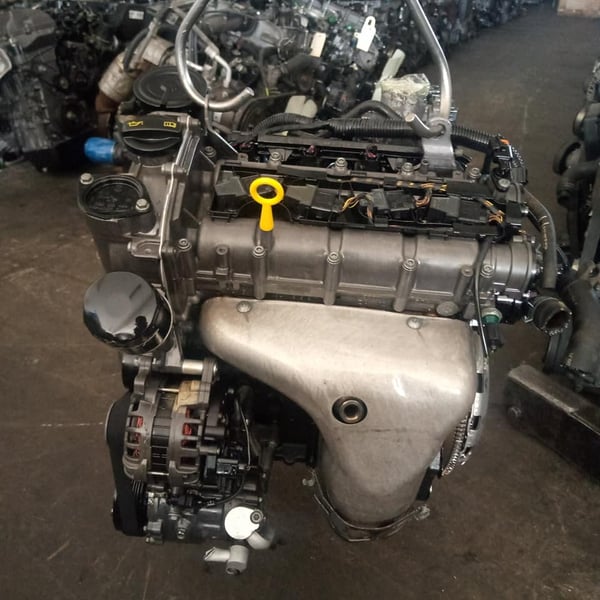Select a cost-effective clp engine for industrial applications.
Select a cost-effective clp engine for industrial applications.
Blog Article
How a Clp Engine Can Enhance Performance in Different Industries
The introduction of CLP engines notes a considerable change in operational performance across different sectors, driven by their capability to optimize fuel usage and lessen downtime. Industries such as manufacturing and logistics stand to get considerably from their robust layout and consistent power outcome, which assure to improve procedures and enhance efficiency. As companies increasingly prioritize sustainability together with performance, the role of CLP engines ends up being much more important. What remains to be seen is exactly how these improvements will certainly shape the future landscape of industrial procedures and their influence on broader economic patterns (clp engine).
Introduction of CLP Engines
CLP engines, or Continuous Liquid Propellant engines, represent a substantial innovation in propulsion modern technology, specifically for area applications. These engines utilize a continuous feed system that permits the continual expulsion of propellant, resulting in enhanced efficiency and efficiency compared to traditional strong or hybrid propulsion systems. By preserving a constant circulation of fluid propellant, CLP engines can accomplish more precise drive control, which is important for maneuvering spacecraft in numerous objective scenarios.
The layout of CLP engines integrates innovative materials and innovative gas management systems. clp engine. This causes minimized weight and enhanced reliability, necessary elements for long-duration space goals. The continual operation decreases the risk of burning instability, a common obstacle in traditional rocket engines.

Benefits in Manufacturing
The manufacturing of Continuous Fluid Propellant (CLP) engines offers numerous significant benefits that improve both efficiency and cost-effectiveness. One of the primary benefits is the structured manufacturing procedure, which decreases the complexity connected with traditional propulsion systems. By making use of fluid propellant, makers can accomplish greater accuracy in engine efficiency, resulting in optimized power result and minimized waste.
Additionally, CLP engines facilitate a greater degree of modularity, allowing for less complicated assimilation into various production lines. This versatility can considerably decrease preparations and enhance total operational flexibility. Using CLP innovation additionally often tends to reduce the demand for considerable maintenance as a result of fewer relocating parts, which converts into reduced downtime and functional costs.

Applications in Logistics
Leveraging Constant Fluid Propellant (CLP) engines in logistics supplies substantial benefits in functional performance and integrity. These engines provide a durable remedy for numerous transport demands, making it possible for the smooth activity of goods across vast distances. The fundamental design of CLP engines permits consistent power output, which translates into smoother and more predictable transport timetables.
Among the crucial applications of CLP engines in logistics remains in durable freight transport, where they can drive both ground and airborne lorries. Their capacity to keep high efficiency under varying load problems ensures that delivery timelines are fulfilled, therefore boosting client complete satisfaction. blog here Additionally, CLP engines Discover More can be integrated right into automated logistics systems, assisting in real-time tracking and optimizing course preparation.
Additionally, the longevity of CLP engines minimizes upkeep downtime, allowing logistics companies to optimize their functional capabilities. This is particularly valuable in warehousing procedures, where effectiveness in dealing with and carrying goods is critical. As logistics proceeds to progress, the integration of CLP engines stands for a forward-thinking approach that not only boosts efficiency but also supports the sector's growing needs for reliability and rate.
Effect On Power Effectiveness
Exactly How do Continual Liquid Propellant (CLP) engines improve power efficiency in transportation? CLP engines utilize a constant circulation of liquid fuel, maximizing combustion processes and keeping a stable thrust outcome. This layout reduces power losses connected with conventional burning engines, where gas delivery can vary and cause inadequacies.
The continuous operation of CLP engines permits an extra efficient thermal cycle, leading to greater details impulse compared to conventional engines. clp engine. This equates to minimized gas consumption for the exact same quantity of job done, considerably reducing functional prices throughout numerous transport sectors, including air travel and maritime sectors
Moreover, the ability of CLP engines to maintain ideal efficiency under differing lots problems lowers the demand for frequent acceleration and deceleration, further enhancing fuel effectiveness. Enhanced power effectiveness not just adds to set you back savings however likewise results in reduce greenhouse gas discharges, aligning with global sustainability goals.
Future Trends and Innovations
Emerging advancements in Continuous Fluid Propellant (CLP) engine modern technology assurance to change the landscape of transport effectiveness and sustainability. As markets pivot toward greener alternatives, CLP engines stand at the forefront, integrating cutting-edge products and style methods that improve performance while minimizing ecological effect.
One of one of the most view publisher site encouraging fads is the adoption of hybrid systems that incorporate CLP engines with renewable resource resources. This harmony can optimize fuel intake and minimize emissions, straightening with international sustainability goals. Furthermore, advancements in computational liquid characteristics (CFD) are assisting in the style of more aerodynamically efficient engines, bring about minimized drag and improved gas effectiveness.
Additionally, the growth of wise surveillance systems is readied to boost operational performances. These systems take advantage of data analytics and IoT modern technology to enhance engine performance in real-time, ensuring that the engines run within their most efficient specifications.
As study remains to explore alternate propellant formulas-- such as biofuels and artificial fuels-- the future of CLP engines looks promising. By using these innovations, markets can not just improve their effectiveness however likewise contribute substantially to a cleaner, much more sustainable future in transport.
Final Thought
To conclude, CLP engines stand for a significant innovation in effectiveness throughout multiple industries. Their capability to optimize fuel intake and lower operational costs, combined with a constant feed system, boosts power outcome and functional integrity. The assimilation of innovative products and less relocating components minimizes maintenance requirements, while positioning with sustainability goals settings CLP engines as an essential innovation for the future. Proceeded advancement in this area guarantees additional enhancements in effectiveness and environmental performance.
Report this page